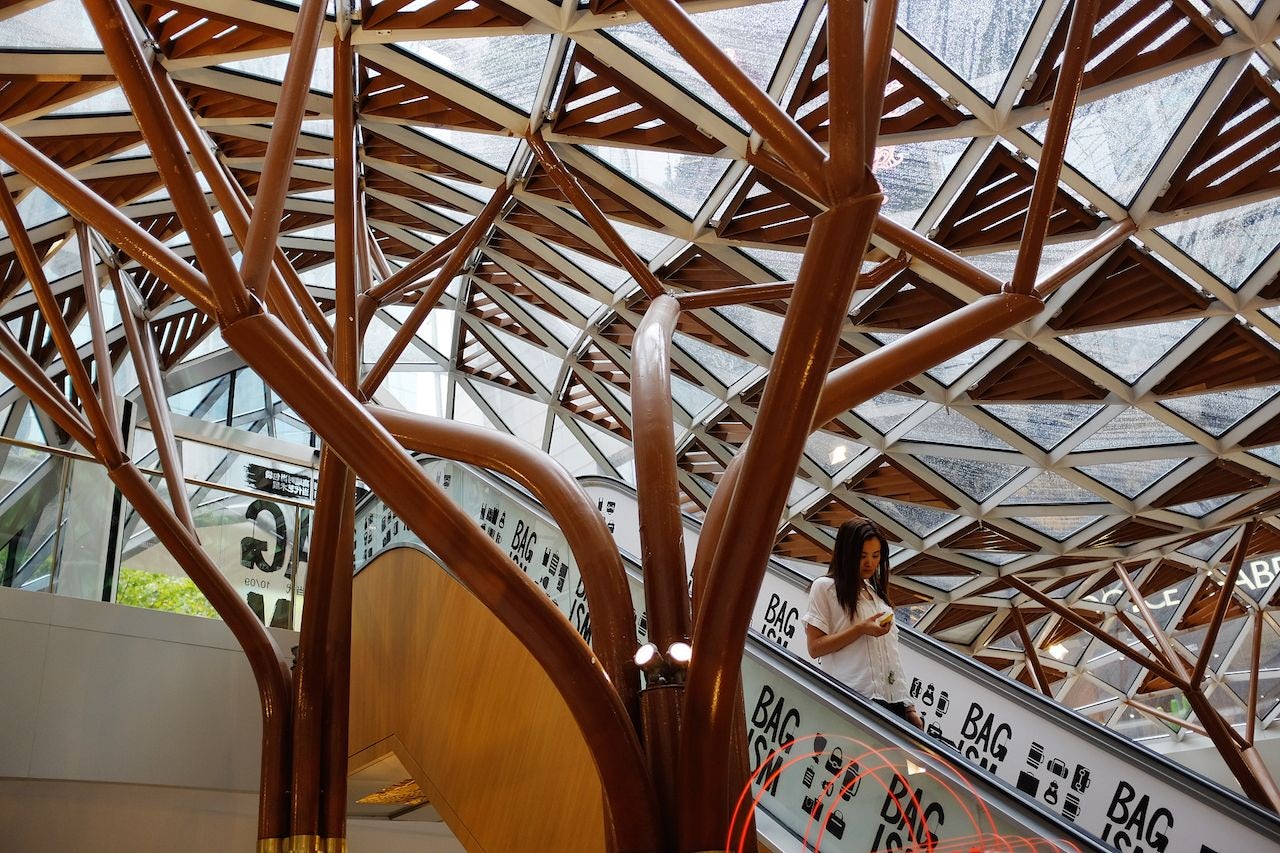Editor's Note#
: Being artsy has been increasingly important for Chinese millennial consumers and that has inspired luxury retailers in Hong Kong on ways to better cater to the needs of these affluent travelers. This story originally appears on Jing Travel, our sister site.
Chinese millennials are perhaps the most coveted market segment in the tourism industry—they’re only getting richer and more travel-hungry—but it can be hard to know how to best market to these seemingly elusive consumers. With millennials being more independently-minded and oriented toward experiences and culture as much as unique shopping experiences, strategies may even need to be turned on their head to appeal to these travelers.
Perhaps nowhere is the need for changing the brand image in Chinese consumers’ minds more important than in Hong Kong. While Hong Kong remains the undisputed leader in terms of Chinese tourist arrivals (Hong Kong is technically an outbound tourism destination), it has started to lose its luster as Chinese travelers—and millennials in particular—are vying other, perhaps more unique, destinations. While Hong Kong is certainly different from mainland Chinese cities, to many travelers, it’s mostly a tax-free shopping haven not far from home.
But there are many reasons to visit Hong Kong beyond shopping (and dim sum). Art exhibitions, museums, galleries, and a vibrant, international atmosphere all make Hong Kong a highly viable destination for the culture-interested modern Chinese traveler.
Once the city of an ever-growing number of high-end malls, Hong Kong enjoys a growing number of more unique experiences—shopping and otherwise. The old Hollywood Road Police Married Quarters, for example, was turned into PMQ—a complex full of studios, shops, and office spaces for Hong Kong’s creative industry. Not much to offer a Chinese tour group, perhaps, yet it has all the more to offer to China’s growing number of millennial travelers.
One of the city’s most interesting new developments is the Victoria Dockside, a mixed-use harbor front development right by tourist magnet Avenue of Stars on the Kowloon-side of the city.
New World Development, the developer of Victoria Dockside, has announced a 2.6 billion, 3 million square feet art and design district on the promenade. The project’s master plan was created by, among others, Kohn Pedersen Fox (KPF), which was also behind the transformation of New York’s Hudson Yards—earning Victoria Dockside the nickname “Hong Kong’s Hudson Yards.”
This week, the developer and its partner K11 Group announced one of the main features of the Victoria Dockside development: a museum-retail complex called K11 MUSEA—described as “doubling as a new ultra high-end experiential retail, art, cultural, and dining destination.“
“Designed with content-driven global millennials in mind, K11 MUSEA will greet visitors with its rotating world-class art collection. Its facade will feature one of the world’s largest living walls, boasting a total surface area of over 50,000 square feet of greenery inclusive of the interior and exterior. Meanwhile, a one-of-a-kind outdoor amphitheater space and a large 25-foot-tall LED screen will also be in place for a slew of cultural happenings,” the two companies explained in a joint press release.
If there’s any question about how serious both companies are about culture, developer New World Development is even rebranding itself as a “cultural enterprise,” and it appears to have to ambition to reshape Hong Kong’s image with it.
And it’s all about millennials. “K11 MUSEA will be Hong Kong and Asia’s new cultural destination, where global millennials can come together and discover their muse,” the companies explain.
“Travel will continue to be a key lifestyle feature of Asian millennials, who are expected to see a 6 percent growth in outbound tourists this year. Chinese millennials, in particular, see travel and luxury as part of an indulgent lifestyle reflective of social status.”
Perhaps the biggest question is if 2.6 billion millennial-focused development is what millennials have in mind when thinking of unique cultural experiences. It couldn’t be more manufactured—but does that matter if it’s manufactured right?
Faced with ever-growing competition from glitzy new malls in mainland China and a growing wealth of exciting destinations available a short flight from China, a doubling down on culture may just be what Hong Kong needs to stay relevant in a world beyond the Chinese tour group. Needless to say, arts and culture look set to remain key areas where Hong Kong trumps mainland Chinese cities. While fancier and newer malls can always be constructed, cultural and artistic capital requires more than capital and labor.
Let’s see how things work out for fancy-new-mall meets arts and culture.



